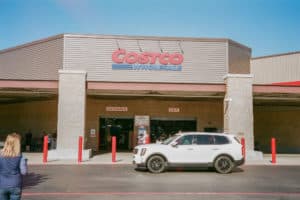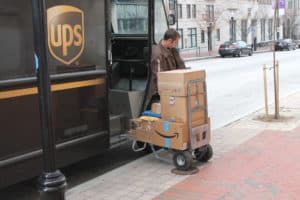Waiting on hold? Check. Tuning into the hold music for so long you can hum the jingle in your sleep? Double-check. Navigating the follow-up game with Costco can feel like trying to jump rope during an earthquake. But who said it has to be that brutal?
In this post, you’ll get the precise timing strategies to transform you into a follow-up maestro at Costco – without all the guesswork.
Quick Takeaways:
- Follow up with Costco 1-2 weeks after initial contact or post-provided timeline, using their preferred communication method—often email—for a balance of eagerness and patience.
- Stand out in Costco’s inbox by crafting a concise, personalized message with a clear value proposition and a direct call to action, ensuring visual appeal.
- If no response is received, respectfully pause, consider indirect engagement through social proof, and be prepared to pivot your focus to new opportunities if needed.
Why Is Timing Important When Following Up with Costco?
When you’re venturing into the vast world of retail giants like Costco, timing isn’t just a matter of hours and days; it’s about striking the perfect balance between eagerness and patience. Getting this balance right can seriously boost your odds of forging a successful business relationship.
Imagine playing a game of double Dutch – you need to jump in at just the right moment. Jump too soon, and you’ll trip over the ropes; too late, and you’ll miss your chance. Following up with Costco is no different. Reach out too frequently, and you risk becoming a nuisance, potentially closing the door on the opportunity. Conversely, if you’re too laid-back, you might fade into the background amidst a sea of other vendors vying for their attention. Persistence is key, but it’s got to be the thoughtful kind – the kind that shows you mean business without crowding the space.
How Soon Should You Follow Up After the Initial Contact?
The initial follow-up is a delicate dance, and timing it right can make all the difference. A general rule of thumb is to follow up within a week or two after your first contact. This shows that you’re proactive and genuinely interested in doing business without coming off as pushy.
However, there are exceptions. If you’ve submitted a proposal or application and were given a timeline for a response, respect that period before reaching out. Should the anticipated timeframe lapse without word from Costco, it’s reasonable to send a polite check-in. But remember, Rome wasn’t built in a day, and partnerships with retail behemoths often aren’t either. Be prepared for a long haul and adjust your follow-up schedule accordingly.
What Are Costco’s Preferred Follow-Up Methods?
Costco, like many organizations, has its preferred ways of communication. To leave a good impression, it’s crucial to follow up using their favored channels. Typically, email is a safe and documented method to track your conversations and maintain a record of your correspondence. However, the best way to determine Costco’s preferred follow-up method is by paying close attention during your initial interactions. If your first contact was over email and you received a prompt reply, that’s a good sign that email is an effective method for further communication.
In some rare cases, a phone call might be appropriate — especially if you’re clarifying something urgent or following up on a time-sensitive matter. Just bear in mind that it’s easier to become an unwelcome interruption over the phone than through email, which allows the recipient to respond at their convenience.
And here’s a piece of advice that might fly under the radar: consider timing your follow-up for mid-week mornings. Decisions big and small tend to stack up by late week, and Mondays…well, they can be a wild card. A mid-week check-in may catch your contact at just the right moment, when they’re deep in the swing of things but not yet swamped by end-of-week deadlines.
Remember, your mission is to stand out in a way that’s respectful and reinforces your reputation as a reliable, potential partner. Each interaction should enhance their perception of you, making your offering harder to pass up – be it for the quality of your products, the integrity of your conduct, or the impeccability of your timing.
Can You Follow Up Too Much?
You’ve heard the phrase “too much of a good thing,” right? Well, this can apply to follow-ups with large retailers like Costco. While persistence is key, pressing too hard can backfire. The trick is to find that sweet spot between being assertive and coming off as pushy.
When your inbox is flooded, and the phone’s ringing off the hook, it’s easy to spot the overly keen salesperson. Costco, with its sheer size and volume, likely experiences this daily. Continually bombarding their teams with follow-ups can signal desperation or, even worse, a lack of awareness and respect for their time.
So, how do you spot the signs? If you’re always getting a voicemail or your emails go unanswered, these are clear-cut signals that it might be time to ease off the gas. Bear in mind that Costco is a busy place; if they’re interested, they’ll get back to you. Remember, you want to be seen as a partner, not a pesky sales rep.
How Do You Stand Out in Costco’s Busy Inbox?
In a sea of sameness, your message needs to be the beacon that stands out. Crafting a follow-up message for Costco is a fine art that requires clarity, a solid value proposition, and a dash of personalization. Here are a few pointers to make your message pop:
- Get to the Point: Your subject line should pack a punch. Instead of “Following up,” try “New Insights on [Product/Service] for Costco Growth Opportunities”.
- Personalization is Key: Show them that you’re not just copy-pasting. Reference previous interactions or highlight how your product fits into their current assortment or promotions.
- Strong Value Proposition: Spell out the benefits clearly. How will your product increase their foot traffic, offer something their competitors don’t, or tap into a new customer base?
- Visual Appeal: A picture is worth a thousand words. Include images or infographics that are relevant and support your message.
- Call to Action: Don’t leave them wondering what to do next. Prompt a response by asking for a specific follow-up meeting date or confirmation.
Don’t forget, every follow-up is an opportunity to reinforce your brand and remind Costco why they should do business with you.
What If You Don’t Hear Back After Following Up?
No response doesn’t necessarily mean “no interest.” It’s a game of patience and strategy. If you’ve ticked all the right boxes with your follow-ups and still hear crickets, let’s look at what you can do next:
- Alternate Contacts: If there’s someone else in the buying department, consider reaching out to them. Keep it professional and avoid stepping on toes.
- Take a Breather: Sometimes, pressing pause can be an effective strategy. Give it a few weeks before touching base again — it shows respect for their time and decision-making process.
- Reflection: Use this period to refine your product or approach based on any feedback or new market insights that could strengthen your next pitch.
One often overlooked tactic might be leveraging social proof. Share testimonials, case studies, or success stories similar to Costco’s demographic on social platforms where they’re active, and tag them. This could pique their interest without direct contact and demonstrate that the market approves of your product.
If it’s been an extended period with radio silence, it may be time to gracefully move on. Focus your energies on other opportunities. Often, a door closes so another can open, and the business world is ripe with possibilities. Remember, if they see traction elsewhere, they may circle back!
Keep these guidelines in your back pocket, and remember, whether you’re dealing with Costco or any other big player in the industry, the approach should always be professional, conscientious, and considerate of the other party’s time and process. A well-timed follow-up could turn the tides in your favor, but being mindful of how you engage can make all the difference.







